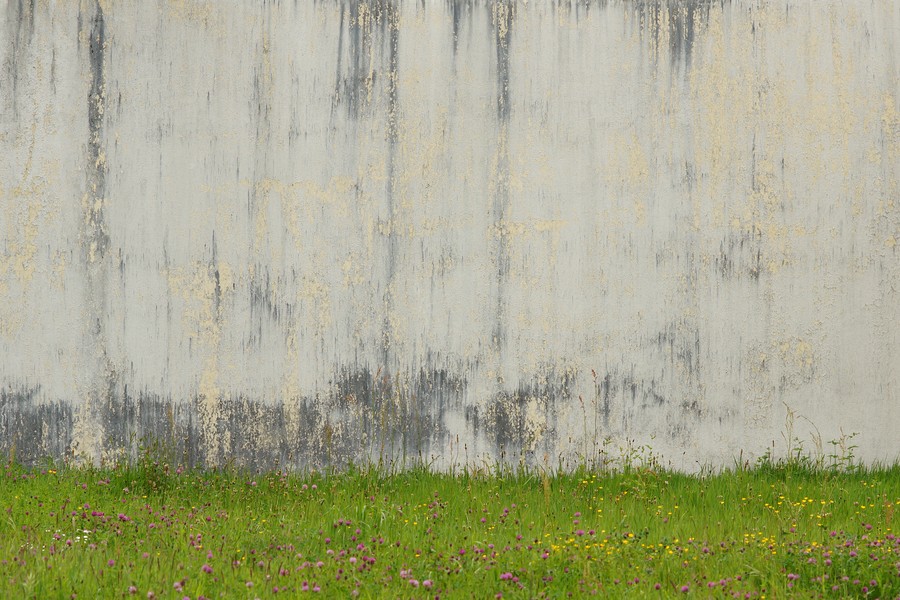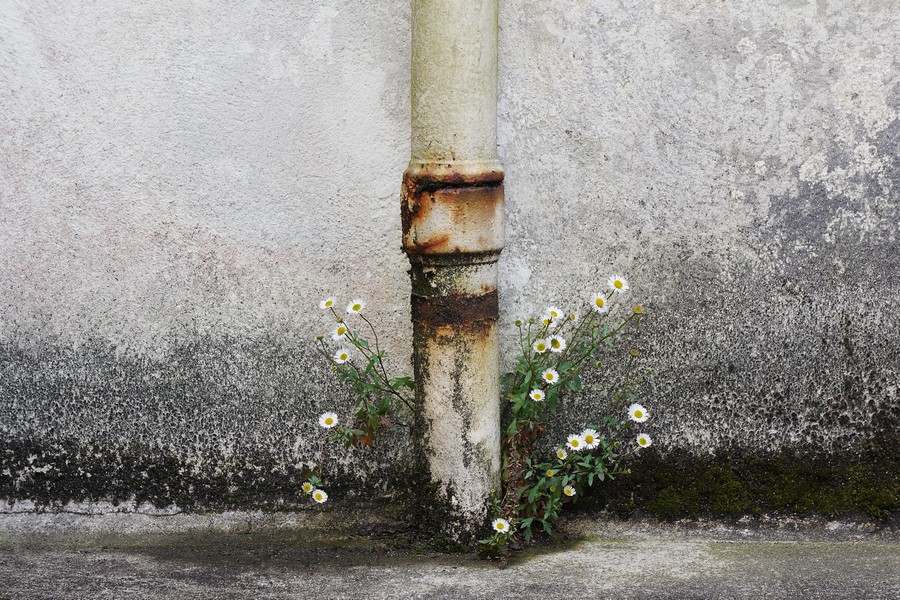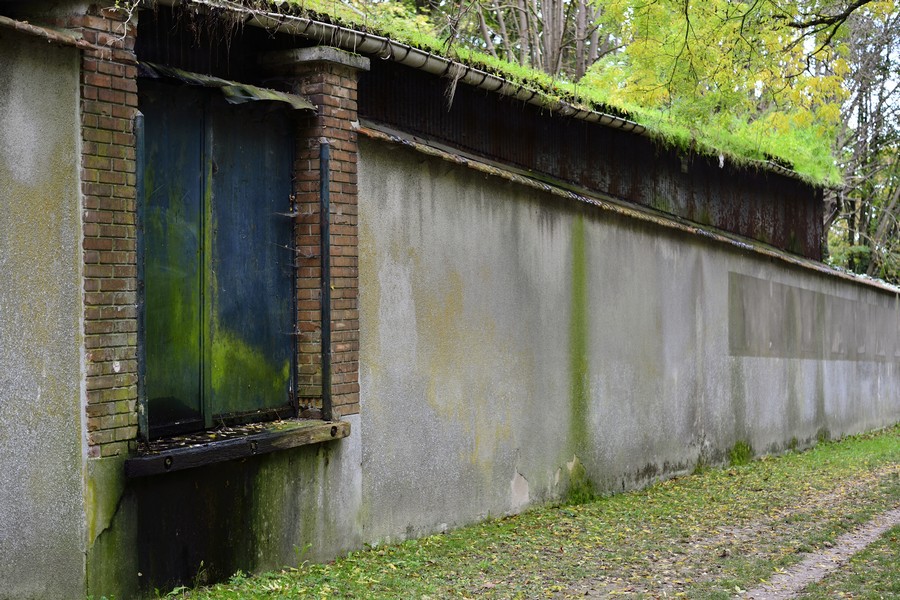Call Our Sussex Damp Experts team now for a free quote, consultation and advice:

Penetrating moisture can be caused by a variety of factors, including building faults or poor workmanship in the roof coverings, leaky rainwater pipes, and inadequate ceilings of doors and windows. External brick or stone walls that have become porous due to age or negligence can also contribute to this issue. When the outer material begins to deteriorate, water is able to infiltrate through the walls, leading to penetrating damp. This problem can occur at any level of the property via walls, roofs, windows or door surrounds. Faulty seals, broken pointings and blocked weep holes are just some examples of how water may penetrate through external walls into homes. Frost damage or physical harm from natural occurrences such as storms and extreme weather are other common causes of penetrating damp in buildings.
Identifying penetrating damp can be done through several markers. A musty or damp odour, internal wall damage such as skirting boards, external wall damage like roofing, damp patches and patchy black mould on walls, and watermarks on stonework are all signs to look out for. It’s important to act quickly as the wood may already be damaged due to the penetration of moisture which could lead to ideal conditions for a wood rot fungus to germinate.
When searching for penetrating damp, it’s important to know where to start. Here are some common areas that typically require attention:
Penetrating damp can also be caused by:

By inspecting these areas thoroughly, you’ll be able to identify potential sources of penetrating damp and take appropriate measures to address them.
To prevent or halt penetrating moisture, it is crucial to inspect the roof for missing tiles, pointing, roof ridge tiles and flashing. These areas are all vulnerable spots where water can seep through and cause damage. The curved tiles at the very top of the roof – known as roof ridge tiles – must be checked thoroughly as they are particularly prone to loosening over time. Similarly, any gaps in the flashing – which refers to the point where a roof meets a wall or chimney – should be addressed immediately. Neglecting these maintenance tasks could lead to severe damp issues that may require costly repairs down the line. Therefore, regular inspections of these essential areas are necessary to ensure your property remains dry and protected from water damage.
To ensure that windows are properly sealed, it is important to examine the frame for any gaps or cracks. If such openings exist, a flexible sealant should be used to fill them in. It is also essential to check whether any existing gaps have already been filled in before applying the sealant. In cases where filling isn’t possible, using a hardwood strip positioned 35mm from the front edge can serve as an effective alternative. Additionally, inspecting under the window sill for a “drip groove” can help prevent water from running onto walls and causing damage. This groove acts as a barrier and directs water away from walls by channelling it towards drainage systems instead. By taking these steps, homeowners can ensure their windows remain well-sealed and protected against potential moisture damage over time.
It is essential to repair any cracks in the door frames to prevent further damage. Additionally, if your external door lacks a weather bar, which acts as a protective shield against excessive rain and moisture, it may be wise to consider installing one. This will not only enhance the durability of your door but also protect it from potential water damage that can lead to costly repairs in the future. Therefore, it is crucial to take proactive measures and ensure that your doors are well-maintained and equipped with the necessary features for optimal protection against environmental factors.
Water ingress normally occurs due to some sort of defect in the building such as cracks in the render allowing water to penetrate the property and, unsurprisingly, can lead to a host of damp related problems if left to its own devices such as:

Given the potential consequences of repeated water ingress, we always recommend contacting our specialist damp experts to investigate the source of the water ingress, the potential damage that has been caused, and how we can prevent moisture ingress and penetrating damp from causing further damage.
To begin, it should be stated that cavity wall insulation can be extremely helpful and can significantly raise the value of your property if done correctly.
Unfortunately, in the hurry to make the houses greener and more energy-efficient, we are increasingly witnessing a correlation between damp and hollow wall insulation, which can lead to penetrating damp.
The act of filling the gap between the outside and inner walls (known as the cavity) with insulation material such as foam, mineral-wool fibre, or beaded polystyrene is referred to as cavity wall insulation.
It is advantageous because it helps to limit the transfer of heat from inside the house to the cold outside. In theory, it’s a terrific idea, but it’s not without its drawbacks if you don’t use a qualified or industrially approved contractor.
Cavity wall insulation damp problems are mainly caused by it being installed improperly or inaccurately, or by a lack of attention to the suitability of installing cavity wall insulation in the first place.
What we mean by the latter is that if there is damage to the external wall brickwork or render that was not detected prior to installation, the cavity wall insulation will effectively operate as a moisture bridge between the damaged external wall regions and the internal wall once it has been put. Penetrating damp is the most prevalent result of this moisture bridge.
Call Our Sussex Damp Experts team now for a free quote, consultation and advice:
The problem of penetrating damp is really serious. For instance, it creates optimal conditions for Serpula lacrymans to thrive, in addition to the normal apparent indications. Dry rot is the popular name for this destructive fungus, and it can destroy the timber framework of your home, posing a danger.
In general, moisture has been identified as one of the leading causes of respiratory health complications, with the elderly, asthmatics, and children being particularly sensitive. Although dampness isn’t always dangerous, it can exacerbate the health problems of individuals who already have them.
There are a number of reasons why your home could be susceptible to penetrating damp. Leaking or pierced pipes, broken roofs, and clogged gutters are all common sources of damp difficulties. Because the foregoing flaws allow moisture to penetrate through your property’s walls, they cause dampness to form.
As time passes, the degree of the damp damage and paint lifting on your interior walls becomes more apparent. These problems are exacerbated during the winter months, when water trapped in the walls freezes and expands, causing the raised paintwork to flake.
Rainfall can infiltrate into buildings through leaky roofs, blocked gutters, overflows, and other water entry sites, generating penetrating wet. When water penetrates the building’s framework, it can cause major structural damage to the walls and beams. Large stains left on the ceiling, floors, walls, and interior paintwork makes this form of moisture easier to identify, especially after severe rains.
The parapets, roofs, and chimneys are usually the most vulnerable to the effects of severe rains since they are difficult to maintain due to their inaccessibility. Water can seep through broken water ridges, lead flashings, hips, or water fillets, making roof junctions the most troublesome areas. Penetrating damp is usually caused by structural difficulties such as faulty roofs, gutters, or wall cracks. Damp can cause damage to a building’s interior and exterior walls.

To thoroughly examine the extent of the penetrative damp and the best course of action, our Chartered Surveyor will most likely propose a full damp survey. The professional diagnosis and advice you receive after a damp survey from a fully qualified surveyor can have a significant impact on deciding the best damp treatment approach, potentially saving you hundreds of pounds. The best way to know the qualifications of a surveyor and whether he is approved is by checking the CRDS (Certificate in Remedial Damp Surveying) or the CSRT (Certificate in Remedial Treatment).
The first step is to do a property survey. We will start our treatment plan, which includes traditional building techniques and damp proofing solutions after we know the amount and nature of the damp problem. This strategy guarantees that the faults that allowed the damp to occur are corrected and that preventative measures such as waterproofed concrete or chemical water repellent are implemented.
Damp has been shown to cause major health problems, not to mention the property damage it can bring if not addressed quickly. As a result, if you suspect your property has damp, you should call an independent surveyor for a professional assessment as to whether or not you require a damp survey.
Sussex Damp Experts is the company to call if you need experienced penetrating damp treatment. Our surveyors and experts will accurately analyse, diagnose, and treat your penetrating damp problem using cutting-edge diagnostic technology and treatment procedures. With over 10 years of experience in treating properties from the effects of damp, rot and woodworm. Contact our team today on 01273 257 212 or click the button below to book a survey today.
Identifying and correcting the cause of moisture/water ingress is the most critical stage in penetrating damp treatment. Property issues are more likely to blame for penetrating damp. Even in residential developments, there are on average 4 potential points of water entry that can impact a home:
To keep the brickwork from being saturated, all of these places must be kept in top shape, with any faults detected and problems corrected.

Giving a set price for dump treatment is impossible because the cost of a damp treatment is determined by a number of factors, such as the size of the house, the extent of the damage, and so on. After conducting a penetrating damp survey on your property, we will provide you with an estimate for the treatment of penetrating damp.
Whether your home is brand new or has had extensive renovations, it is still susceptible to penetrating damp. Choosing to handle it yourself may sound appealing, but it may out to be ineffective because it is quite easy to misdiagnose the sort of damp causing damage to your home. As a result, it would be in your best interests to contact our expert surveyor to assess the damp in your home. Our surveyor would arrive and determine the cause of the damp, the extent of the damage, and the necessary repairs. Sussex Damp Experts can perform a property damp survey, offer you related advice and treat your penetrating damp issues.
We adhere to high standards when it comes to damp proofing treatments, professional re-plastering, wood preservation, and damp inspections.
We provide homeowners, local governments, small enterprises, and large commercial properties with highly customised, professional, and dependable damp proofing treatment and repair services.
If you are experiencing damp issues in Sussex and the surrounding areas, please call our damp specialist team on 01273 257 212 to schedule a survey or treatment.
Following our instructions, one of our CSRT and CSSW trained surveyors will thoroughly examine and provide a report, price quote and treatment suggestions.
We have a team of damp proofing experts with a wide range of experience dealing with damp issues such as penetrating damp, dry rot and woodworm, wet rot, wood rot, basement waterproofing, all sorts of interior dampness, and condensation control in both commercial and residential premises.
For your safety and security, all of our work is covered by our company’s guarantee. We are also members of the Guarantee Protection Scheme, an independent insurance policy that covers the duration of your guarantee if you want to take it out.


Max and his team have been at our property all week and I really can’t thank them enough for the fantastic job they’ve done on plastering both our walls and ceilings. They have literally transformed the appearance of our house! Not only has Ma…
From start to finish Max has been incredable. His knowledge lin damp proofing is second to none and his team where very clean and polite. The plastered finish was like glass so happy we choose Max Plastering for job.
Lovely bunch of lads left a very neat and clean job. Problem was solved.
Perfect Finnish and all left clean and tidy and no mess. Used Max previously and would not hesitate to ask him carry out more work.
Max, Harvey and Stuart arrived promptly as arranged. Done a great job on our outside rear wall. Work completed to a high standard, removal of all old material and cleaned up after themselves. I am so pleased with the standard of their work they ar…
They turned up on time and carried out the works in a very professional manor leaving the front of the house clean and tidy. Very impressed would definitely recommend.
I have to say that on every level Max (with Stuart and Harvey) did an extremely professional job! They explained what they were going to do, they were polite and courteous and respected that they were coming into our home. The plastering is of the…

I called max and he managed to come around the same day to do a survey. The next day I received an extremely detailed survey compared to any other damp proofer which made me feel very at ease that he was going to do the right job. Max and team tur…
Contact Sussex Damp Experts Now to Speak With an Expert.